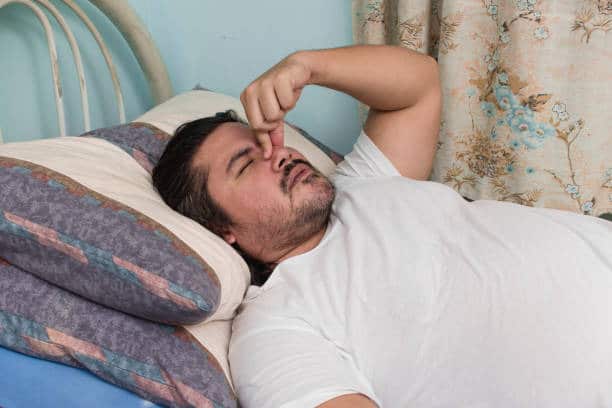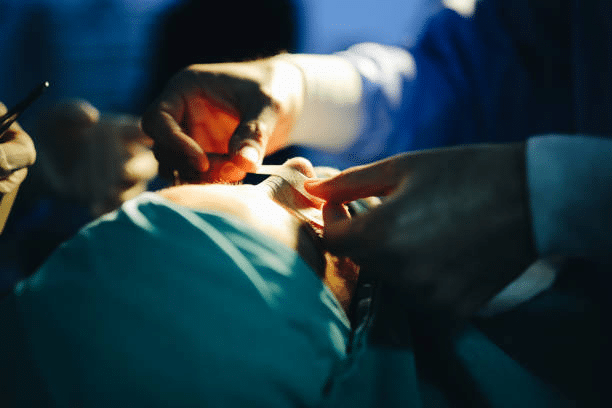A deviated septum, often unnoticed, may be the culprit behind nasal congestion, a stuffy nose, or difficulty breathing. This condition occurs when the septum, the bone and cartilage dividing your nostrils, is off-center. Identifying a deviated septum is key, as many are unaware of this common issue. A simple self-test can aid in recognizing signs of a deviated septum.
It’s not always apparent by looking at the exterior of your nose. While your nose might seem straight, the internal structure could be misaligned. Confirming a deviated septum requires a professional medical examination, but you can start with a self-test at home to assess your symptoms.
How To Self-Test For A Deviated Septum

Fortunately, it is usually easy to tell whether you have a deviated septum. It could cause trouble breathing through the nose during sleeping or snoring. Additionally, you may try it right now in the convenience of your own home. The following is a step-by-step deviated septum self-test:
- Close down one nasal tube by pressing down on your nose with your index finger.
- Breathe in deeply via the open nose.
- Continue on the other side.
Note if it’s simple or difficult to breathe through the open nostril when you do this. You probably don’t have a septal deviation if air can readily travel through both nostrils.
You could have a deviated septum if there is a clear difference between your sides (for example, if your airways feel open on one side but not the other).
Not certain As you breathe, alternate between using one and the other nostril. As often as necessary, until you are sure that you do or do not have a deviation, do this self-test.
More symptoms might come from a deviated septum in addition to this self-evaluation. This article covers all potential causes (such as nasal obstruction), nasal symptoms, and therapies.
The Causes, Symptoms, And Treatment
The bone and cartilage that separates your nostrils, the nasal septum is displaced when there is a deviated septum. Over 80% of individuals are believed to have some kind of nose deviation, making it a prevalent ailment.
The degree of this deviation may be from slight, with no apparent symptoms, to severe, with a noticeably crooked nose.
Two equal-sized nasal passages make up a typical nasal passage. When the nasal passageways have different sizes, a deviation is apparent. Specific symptoms, such as difficulty breathing through the nose, may or may not be brought on by this.
The Causes Of A Deviated Septum: Trauma, Birth Defects, Or Natural Deterioration?
Numerous factors might cause the septum of the nose to deviate. It could be brought on by trauma (from an accident or surgical procedure), congenital deformities, or how your nose has developed over time. Deviated septum may be caused by:
Natural Causes
Genetics may also cause nasal deviation from birth, or it may occur over time as the cartilage in the nose ages. The illness often appears in adulthood and is more prevalent in males than women, although it can affect children, too.
Trauma Or Injury
Damage to the nose is often the cause of a deviated septum. This might be an accident, a blow during a sporting event, or even from touching your nose too vigorously.
Signs Point of a Deviated Septum
The severity of issues related to a deviated nasal septum varies. If you have a slight septal deviation, you might not experience any symptoms. However, significant misalignment can lead to breathing difficulties and other health issues, crucial in identifying a deviated septum. These issues may include:
Crooked Nose
A crooked nose is the most evident sign of a deviated septum. The septum pushes the nose to one side, which is particularly noticeable when there has been trauma.
Nasal Blockage Or Drainage
As a result of the deviation, mucus may accumulate in the afflicted nostril, leading to nasal congestion; typically, one nasal passage is worse or a runny nose, which is an additional typical symptom. This mucus may also be difficult to expel, making you feel congested. Congestion is often greater on one side than the other and is typically unaffected by nasal sprays or allergy medications.
Persistent Nosebleeds
You may get nosebleeds more often than usual because a deviated septum may lead to dryness and cracking in the nose.
Sleep Apnea & Snoring
Additionally, a severe deviated septum may make breathing difficult and make you snore loudly, making it difficult to sleep. This could make you feel worn out all day.
There’s Always One Nostril Blocked
A deviated septum’s most typical symptom is difficulty breathing through the nose. The displaced septum narrows or restricts your nasal channel, resulting in one closed nostril. This could happen on one side or both.
Repeat Sinus Infections
You can be more susceptible to sinus infections if your septum is deviated. This is because a misplaced septum may prevent your sinuses from dripping mucus, which can cause fluid to build up.
Face Pain Or Discomfort
If your deviation is significant, you could also feel facial pain and soreness around your nose’s bridge.
Declined Septum
A nasal valve might collapse due to a deviated septum. As you breathe through your nose, little flaps of cartilage-based tissue called nasal valves open and shut. When you inhale, they open to let air in and close when you exhale, acting as one-way doors that prevent air from escaping.
When the nasal valves don’t open correctly, nasal valve collapse happens, making it challenging to breathe through your nose. A deviated septum may be to blame, in addition to other health issues, including allergies, colds, and sinus infections.
In addition to the symptoms mentioned above, the additional signs include:
- Migraines or headaches (caused by sinus infections or congestion)
- Reduced ability to smell
- Chronic post-nasal drip
- Ear, nose and throat infections or frequent colds
If you performed the deviated septum self-test and have any of the symptoms listed below, it may be time to seek medical attention.
How To Manage A Deviated Septum: Surgery As An Option

A deviated septum nose may be controlled or corrected, which is excellent news. There are a few treatments, but surgery is the only natural “cure” for a deviated septum.
The severity of your Deviated Septum symptoms and the underlying cause of your problem will determine your suggested course of therapy.
- Treatment may focus on treating your symptoms if you have a slight aberration and few symptoms. It may be advised to use decongestants, antihistamines, and humidifiers.
- You could be advised to have septoplasty surgery if your deviation is more severe or if other conservative treatment options have failed. To open up the airways of your nasal cavities and make it easier to breathe, surgical surgery entails creating an incision and repositioning the nasal septum so that it is in a straight line.
Deviated Septum Operation
Surgery to treat septal deviation is a treatment to realign the septum.
This procedure’s goal is to:
- Surgery to treat septal deviation is a treatment to realign the septum.
- This procedure’s goal is to:
- Repair a fractured or unequal septum.
- Relieve the signs of a deviated septum, such as breathing difficulties.
- Enhance nasal outflow to lower the incidence of sinus disease.
- Stop snoring
- Boost your general level of wellbeing
The divider between the nostrils, the septum, is surgically straightened during a surgery called a septoplasty to enhance breathing. It should not be anticipated that it will straighten a crooked nose since it is not a cosmetic procedure. A septorhinoplasty could be required if both cosmetic enhancement and enhanced breathing are sought.
The septum may be removed and reconstructed in a straighter position, and the nostril is sliced during the process. Following the treatment, there may be discomfort that may be treated with medicines, as well as possible swelling and bruising around the eyes and nose.
During the first few days after surgery, it’s crucial to relax and refrain from sneezing or strenuous exertion. Most patients see symptom relief and full recovery in two to three weeks.




